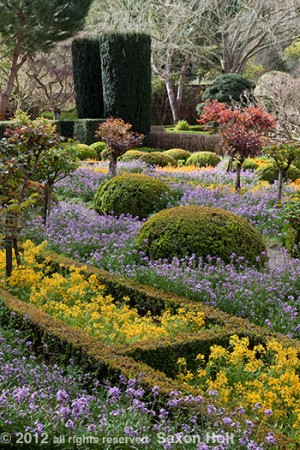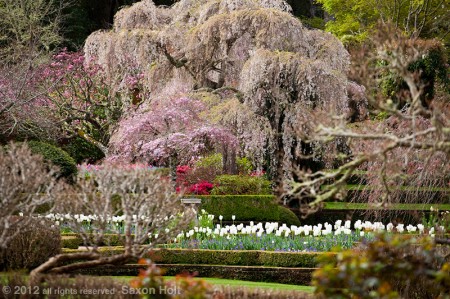So far, in these lessons on garden photography, we have explored the rudiments of composition and light in making good garden photos. In today’s lesson (1.4) we step back and begin to analyze why we take pictures so that we can begin to understand when to snap the shutter.
Let’s assume you are not content with simply documenting the garden – you want photos to share, not just jog your memory. You will want to have something to say, a story to tell. I hope it does not seem too obvious, but let’s start with appreciation and mimicry. First, let’s show our appreciation of the wonder of gardens, then let’s try to find photos that might inform our own gardens with ideas we can mimic.
To get good garden photos the best place to start is, well, in a good garden. Start by visiting the best you know. For me it is Filoli, the National Historic Trust garden in Woodside, California. Here is a fairly crude one minute video, and as you watch it, be thinking what you might photograph as your eye scans the garden. It is easy to get overwhelmed in a great garden.
As I scanned the garden from this spot, I found two very different, distinctive shots besides the wide panorama that opened this post. That overall view was an easy one. All the work of making that a good photo was done by the garden. I bet any one of you could have stood in that spot and seen that picture.
As I looked around the scene myself, I hardly knew where to start but what “I” really noticed, your results may vary, what “I” saw were the twin shapes of the pruned Bay Laurels towering above the flat plane of bedding plants in the Chartres Window Garden. That is one story.
Then I realized what made the whole scene in the garden say “spring” to me were the weeping cherry trees. I needed to put on a telephoto lens, come in and frame that detail, but it says spring so much more than the wide view.
Look for that composition in the very middle of the opening wide view. I did not move the tripod. Just changed lenses when I saw my story.
When I give lectures and use those photos as examples, I refer to these sorts of garden photos as “armchair gardens”. Ones we can appreciate in an armchair looking at the photos, but they are not garden we can mimic. These grand gardens may be great for taking photos, great starting points to practice our craft, but they don’t really apply to real gardeners, the scale is so large that it is really hard to communicate practical garden information.
We can appreciate them but not mimic them. Good garden photos that promote mimicry are usually vignettes of smaller gardens, even our own. When one small area is looking good we can use the camera to frame up just what we want the viewer to see. Back to my old tag line – The Camera Always Lies.
Garden photographers don’t want to simply take a beautiful picture of a garden that we appreciate, we want to share some garden knowledge that might help our viewer learn something, something we learned in the garden, something of our own interpretation – our story.
One of the truly remarkable things about giving hands on workshops on garden photography is the realization that every photographer has a unique eye and can tell their own story. I love seeing what the students produce. Don’t go into a garden and try to recreate a photo someone else took. Open yourself up to the garden and tell your story.
It is really gratifying when the story you tell with a picture can spark an idea for another gardener. So unlike the armchair gardens, I often seek smaller gardens to work in, ones from which I hope that others can learn, maybe even mimic.
This is the amazing O’Byrne garden, Northwest Garden Nursery in Oregon. Fabulous nurserymen, astonishing growers.
Not a typical “small” garden but there “are” vignettes that almost any good gardener might do.
More on this and other ways to mimic what we see with our cameras as this lesson unfolds in the e-book. What a tease …





